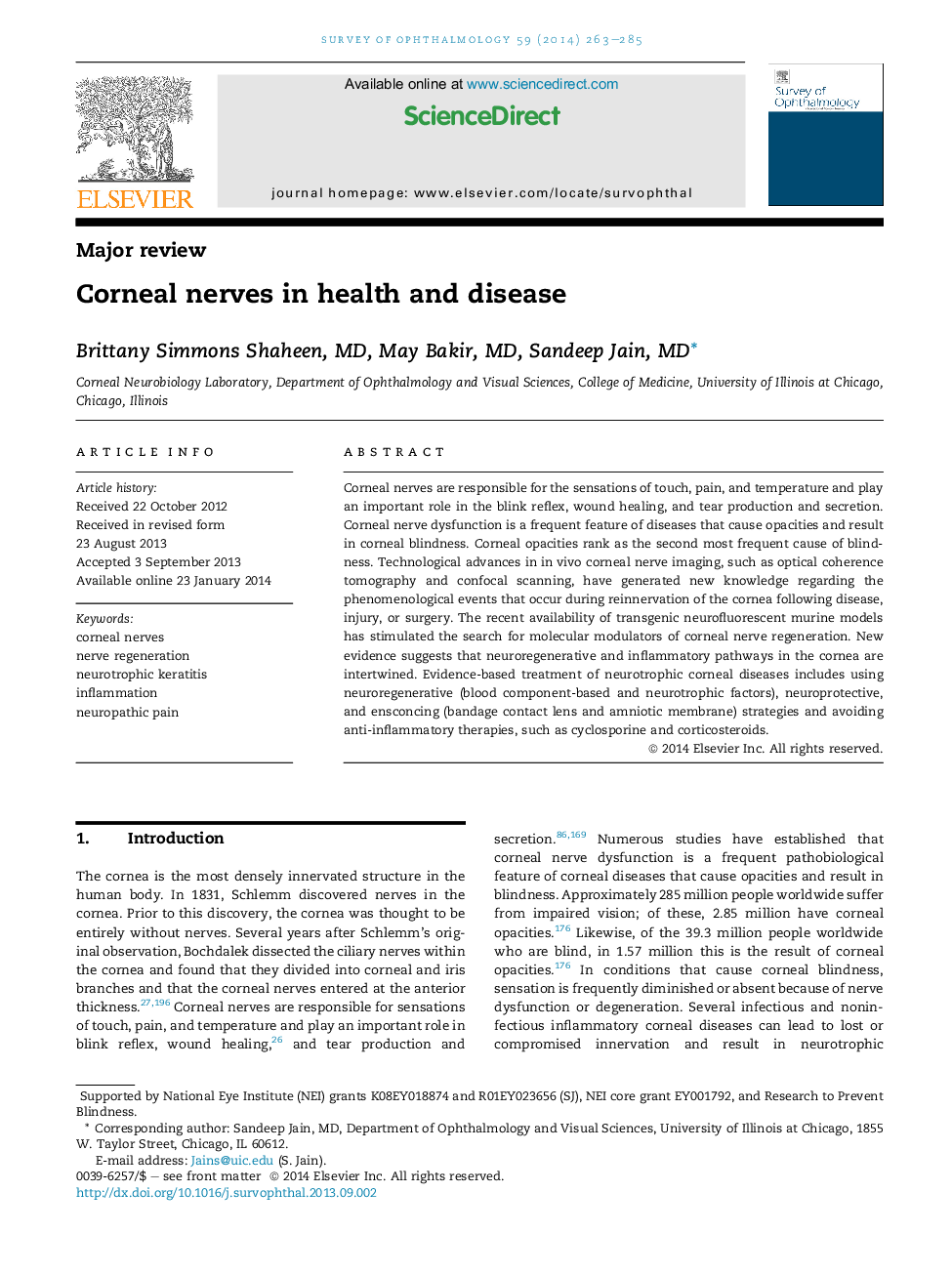| Article ID | Journal | Published Year | Pages | File Type |
|---|---|---|---|---|
| 6202846 | Survey of Ophthalmology | 2014 | 23 Pages |
Corneal nerves are responsible for the sensations of touch, pain, and temperature and play an important role in the blink reflex, wound healing, and tear production and secretion. Corneal nerve dysfunction is a frequent feature of diseases that cause opacities and result in corneal blindness. Corneal opacities rank as the second most frequent cause of blindness. Technological advances in in vivo corneal nerve imaging, such as optical coherence tomography and confocal scanning, have generated new knowledge regarding the phenomenological events that occur during reinnervation of the cornea following disease, injury, or surgery. The recent availability of transgenic neurofluorescent murine models has stimulated the search for molecular modulators of corneal nerve regeneration. New evidence suggests that neuroregenerative and inflammatory pathways in the cornea are intertwined. Evidence-based treatment of neurotrophic corneal diseases includes using neuroregenerative (blood component-based and neurotrophic factors), neuroprotective, and ensconcing (bandage contact lens and amniotic membrane) strategies and avoiding anti-inflammatory therapies, such as cyclosporine and corticosteroids.
